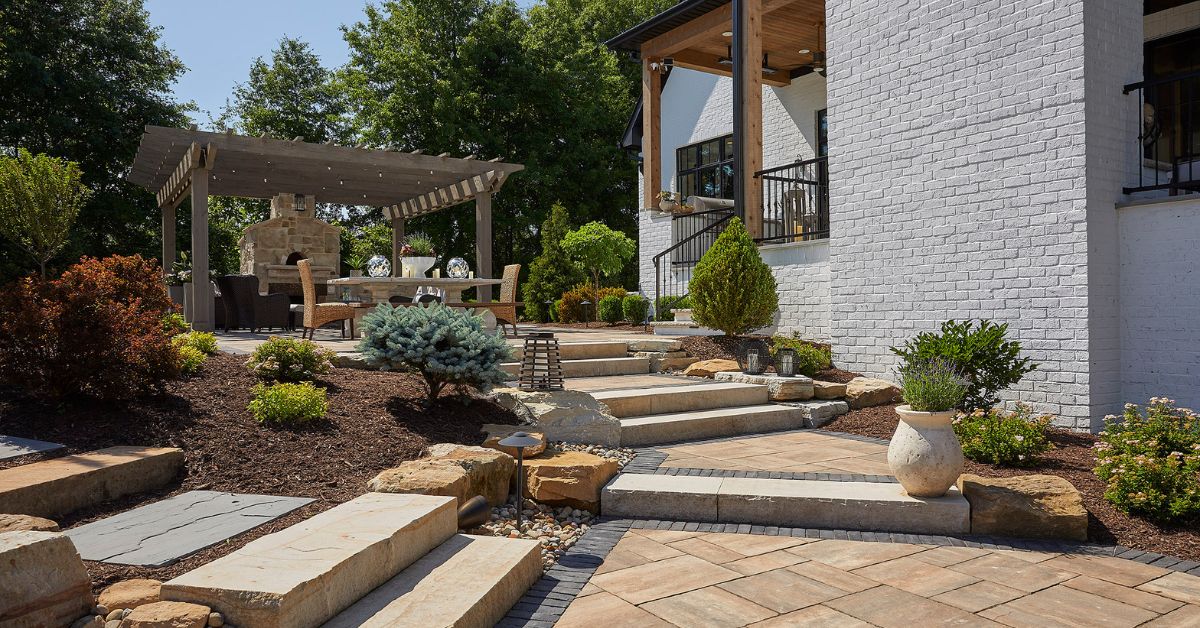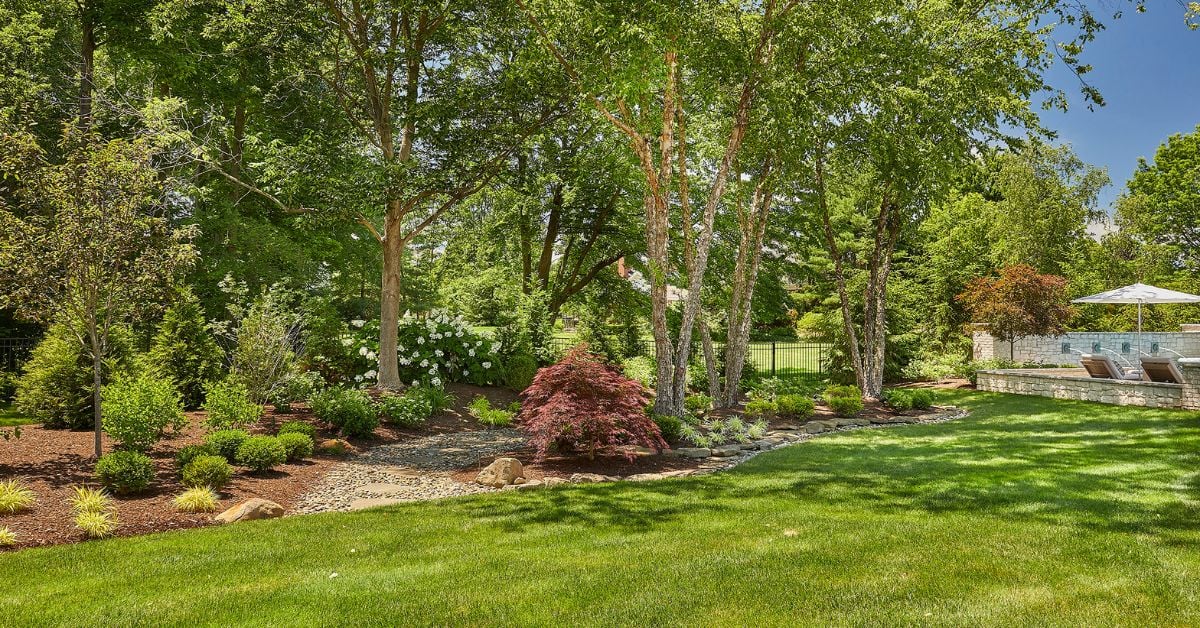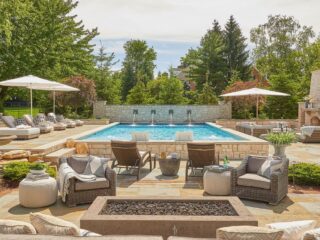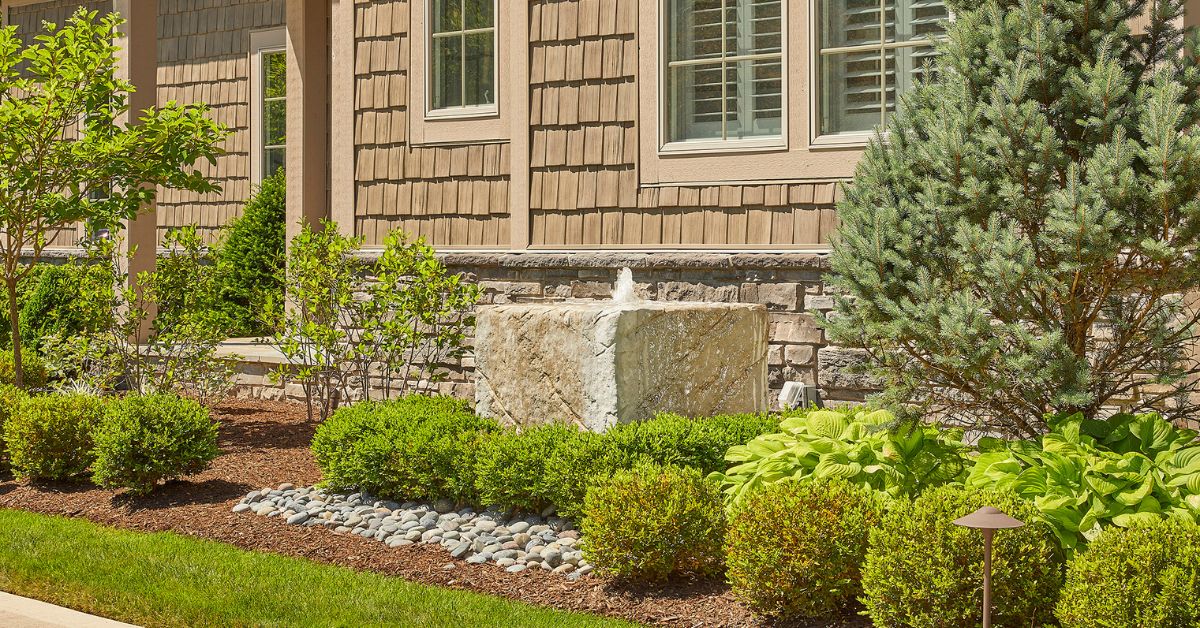Creating a beautiful outdoor space feels overwhelming when you’re staring at a blank yard. Whether you’ve just moved into a new home or you’re ready to revamp your existing landscape, knowing where to start makes all the difference. This comprehensive guide covers everything to know about the basics of landscape design, giving you the foundation to transform your property into the outdoor oasis you’ve always envisioned.
Design Principles of Landscaping
Strong landscape design relies on four fundamental principles that create harmony and visual appeal throughout your outdoor space.
- Balance ensures your landscape feels stable and comfortable to the eye.
- Proportion refers to the size relationships between different elements in your landscape.
- Unity brings all elements together to create a cohesive look.
- Rhythm guides the eye through your landscape using patterns and repetition.
Understand Your Space
Your yard has unique characteristics that will influence every design decision you make. Walk through your property at different times of day to observe how sunlight moves across the space. Note which areas receive full sun, partial shade, or deep shade throughout the day. This information determines where you can successfully grow sun-loving vegetables or shade-preferring hostas.
Take note of slopes, low-lying areas, and natural water flow patterns. These features affect drainage and can become design opportunities. A gentle slope might be perfect for a rock garden, while a low area could become a rain garden that manages stormwater runoff.
Consider your yard’s exposure to wind, especially if you live in an open area. Strong prevailing winds can damage delicate plants and make outdoor entertaining uncomfortable. Understanding these conditions helps you choose hardy plants and plan windbreaks where needed.
Define Your Goals
Before selecting a single plant or planning any hardscaping, clarify how you want to use your outdoor space. Families with young children might prioritize open lawn areas for play and safety, while empty nesters might focus on creating intimate seating areas for morning coffee and evening relaxation.
Think about your entertaining style. Do you host large gatherings that require open spaces and multiple seating areas, or do you prefer intimate dinners with close friends? Your social preferences directly impact your layout decisions and help determine the size and location of patios, decks, and dining areas.

Create a Focal Point
Every successful landscape design needs a strong focal point that draws attention and anchors the overall composition. This standout feature gives visitors a place to rest their eyes and provides a sense of purpose to your design.
Trees make excellent natural focal points, especially specimens with interesting bark, unusual shapes, or stunning seasonal displays. A Japanese maple with brilliant fall color or a flowering dogwood can serve as your landscape’s centerpiece for years to come.
Water features create immediate visual and auditory impact. A fountain or pond becomes a natural gathering point. The sound of moving water adds another sensory dimension to your outdoor space.
Architectural elements like pergolas, gazebos, or distinctive seating areas can serve as focal points while adding functionality. A beautiful bench positioned to take advantage of a scenic view serves dual purposes as both destination and design element.
Plan for Functionality
Beautiful landscapes must work well for the people who use them. Design pathways that connect different areas of your yard logically and safely. Main walkways should be wide enough for two people to walk side by side, while secondary paths can be narrower but still accommodate garden carts and maintenance equipment.
Position seating areas thoughtfully to take advantage of morning sun, afternoon shade, or scenic views. Consider sight lines from your house to ensure outdoor seating areas feel connected to your indoor living spaces.
Think about lighting for evening use and security. Solar path lights, uplighting for trees, and accent lighting for entertaining areas extend your outdoor season and improve safety.
Choose the Right Plants
Plant selection makes or breaks your landscape design. Start with plants suited to your specific climate zone, soil conditions, and sunlight exposure. Native plants typically require less water, fertilizer, and pest control while supporting local wildlife.
Consider mature plant sizes when making selections. That cute little shrub at the nursery might grow into a massive specimen that blocks windows or overwhelms smaller plants. Research growth habits and space plants appropriately from the beginning.
Plan for year-round interest by choosing plants with different seasonal highlights. Planting a diverse array of spring-flowering trees, summer-blooming perennials, plants with fall color, and evergreens with winter structure keeps your landscape attractive throughout the year.
Think About Layers
Professional landscapes use plants of different heights to create depth and visual interest. Canopy trees form the top layer, providing shade and vertical structure. Understory trees and large shrubs create the middle layer, while perennials, groundcovers, and small shrubs fill the bottom layer.
When planning layers, consider sight lines and views you want to preserve or screen. Lower plants in front allow you to enjoy taller specimens behind them, while strategic screening can hide utility areas or create private spaces.
Different layer combinations work for various landscape styles. Formal designs might use precisely shaped evergreen layers, while naturalistic landscapes can incorporate more flowing, organic arrangements.
Incorporate Hardscaping
Hardscaping elements provide structure and extend your living space outdoors. Patios and decks create defined areas for dining and entertaining, while walkways guide movement through your landscape and protect your lawn from foot traffic.
Retaining walls solve practical problems like erosion control while adding visual interest and creating planting opportunities. They can also provide additional seating and help define different areas within your landscape.
Fencing and screening structures create privacy, define property boundaries, and provide support for climbing plants. Choose materials that complement your home’s architecture and your overall design style.

Focus on Color and Texture
Color schemes tie your landscape together and reflect your personal style. Monochromatic schemes using various shades of one color create sophisticated, calming effects. Complementary color combinations using opposites on the color wheel create vibrant, energetic displays.
Plan for seasonal color progression so that your landscape maintains interest throughout the growing season. Early spring bulbs, summer annuals, fall foliage, and winter berries can provide continuous color if planned thoughtfully.
Texture creates visual interest even when flowers fade. Mix plants with different leaf sizes, shapes, and surface textures. Combine glossy leaves with matte finishes, broad leaves with narrow ones, and smooth textures with rough bark or fuzzy foliage.
Repetition of key colors and textures throughout your landscape creates unity while preventing monotony. Use your favorite combinations in different areas to tie your design together.
Bringing Your Landscape Vision to Life
This guide covers everything to know about the basics of landscape design. However, it’s a lot to learn. Depending on your goals, landscaping can be a complex process that may require the help of an experienced team.
Ready to turn your landscape dreams into reality? Contact Vizmeg Landscape today to learn more about their landscape design and build services. Their experienced team can help you navigate the complexities of landscape design while ensuring your project meets your specific needs and budget. Let the experts at Vizmeg Landscape guide you through creating the outdoor space you’ve always wanted.





Leave a Reply